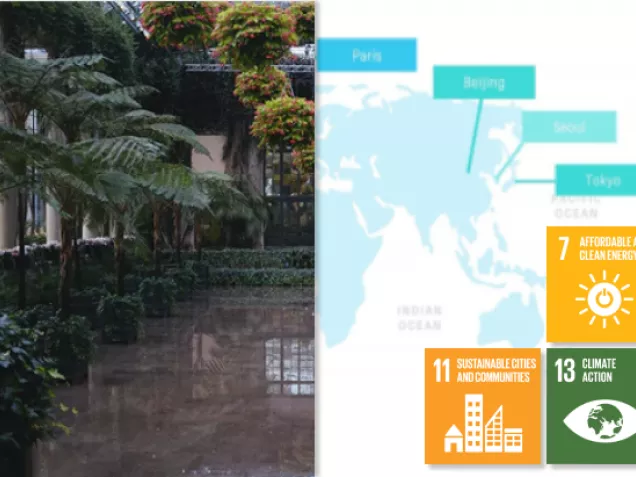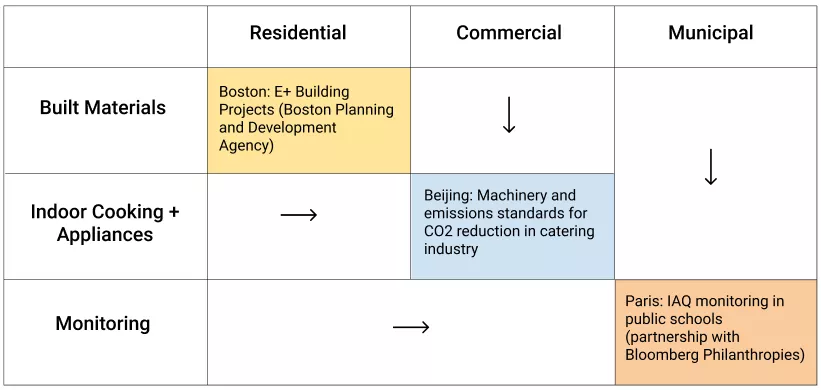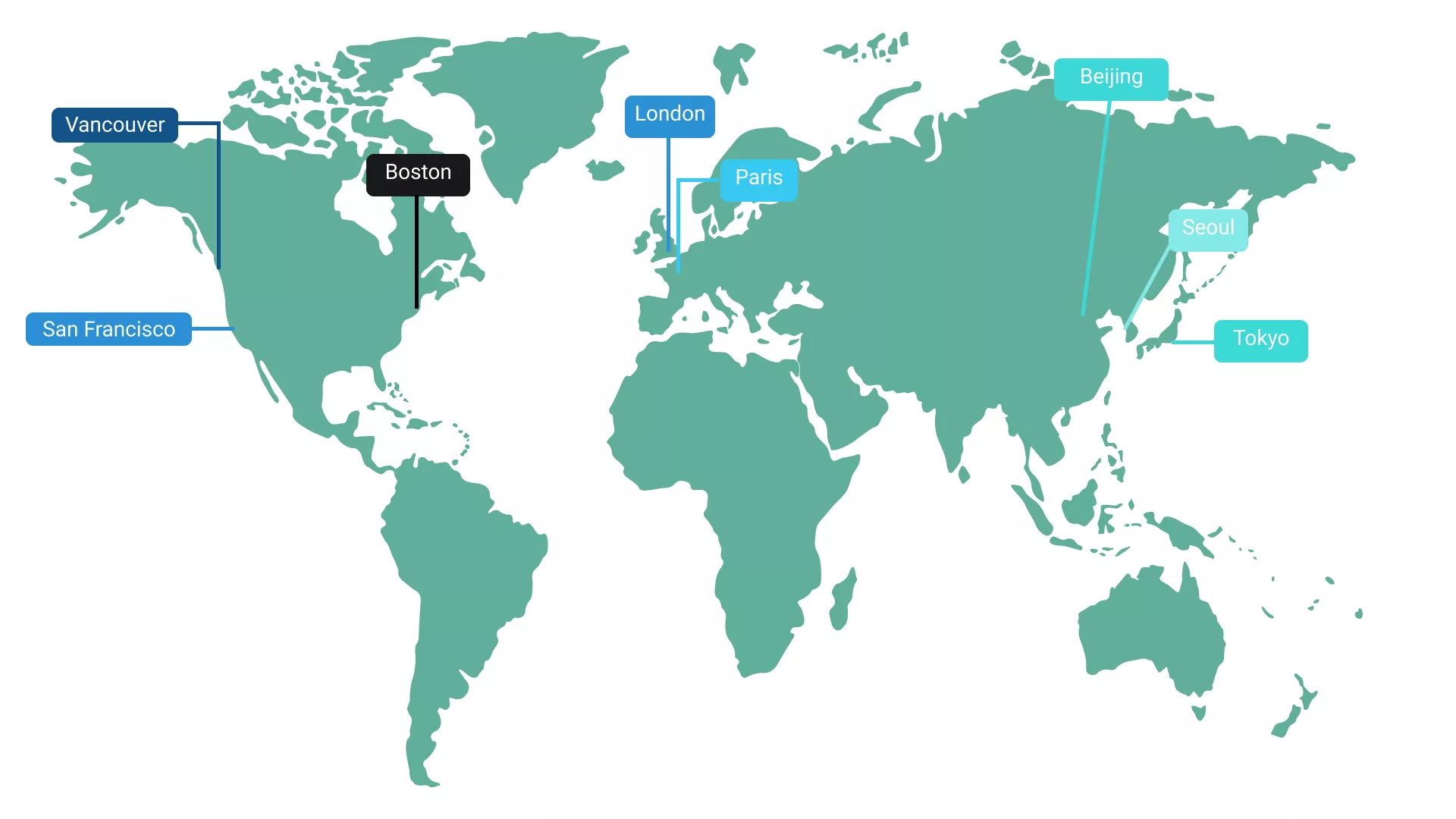Using the United Nations Sustainable Development Goals framework, our research team explored how cities around the world are implementing decarbonization retrofits and indoor air quality incentive programs. We sought to provide a series of recommendations for the Los Angeles Mayor’s Office on indoor air quality programs that can be adapted for use in municipal, commercial, and residential buildings in Los Angeles.
Indoor air quality (IAQ) is an important health factor that impacts everyone, every day. This blog post presents the research and findings of a student team tasked with developing recommendations to improve indoor air quality in Los Angeles.

For ten weeks over summer 2020, our student team from Occidental College, UCLA, Pomona College, and the Thunderbird School of Management at Arizona State University, led by recent USC graduate Jarod Majeika, collaborated with the office of the City of Los Angeles’ Chief Sustainability Officer in order to provide Los Angeles with global best practices on the management of healthy indoor environments.
Using the United Nations Sustainable Development Goals framework, our research team explored how cities around the world are implementing decarbonization retrofits and indoor air quality incentive programs. We sought to provide a series of recommendations for the Los Angeles Mayor’s Office on indoor air quality programs that can be adapted for use in municipal, commercial, and residential buildings. Our initial research questions allowed us to identify best practices in eight global cities. We focused our research and recommendations on increasing indoor-air regulation, bolstering retrofit incentive programs, establishing finance schemes for retrofits that include energy contracts between public authorities and private energy companies, encouraging increased monitoring in areas with vulnerable populations, and pursuing community outreach to educate populations on the health dangers of poor indoor air quality.
Case Study Research
Our research began with collecting information on global cities with policies or programs that address both decarbonization and indoor air quality (IAQ). After selecting a sample of city programs, we organized our chosen cities into a matrix. Our matrix categorized city programs into three areas of built design: residential, commercial, and municipal. Within these areas, we sorted the data into themes such as residential cooking, air-quality monitoring, and built materials. Working with this matrix, our team selected programs that would be most applicable for implementation in Los Angeles.

(a selected piece of the team’s research database)
The cities we chose included Boston, Beijing, London, Paris, Vancouver, Tokyo, Seoul, and San Francisco. Our team interviewed stakeholders, academics, city-planners, and technology companies knowledgeable about the development and implementation of IAQ technologies and policies. While no city has realized a holistic indoor air quality improvement program that can be replicated in its entirety in Los Angeles, many cities have piloted and launched programs from which successful features can be drawn.

Findings
What we found ranged from large-scale initiatives, such as city partnerships with utility companies to more technical schemes, such as sliding pay scales or the use of low-interest loans. Competition models were also a popular approach to encourage program buy-in and innovative building design. We found that improving city-wide electrification was one of the most effective methods to decarbonize energy-use and improve air quality. The following are examples of municipal programs that may be relevant to potential IAQ and decarbonization policy and programming in Los Angeles.
Electrifying Cooking
Coal and gas cooking represents a major source of indoor air pollution worldwide. Beijing implemented emissions standards on commercial and residential cooking machinery and established an information database regarding restaurant records of smoke emissions and machinery that is updated on a monthly basis. With the comprehensive control measures and municipal regulations, Beijing’s overall PM2.5 emissions fell 14.3 percent in the first 11 months of 2019. In Los Angeles, a single cooking session with gas can worsen indoor air quality to a level worse than the outdoor air quality of highly polluted areas of LA (CARB Residential Cooking Exposure Study). Electric cooktops are a healthier alternative to coal or gas cooking stoves. Incentive programs to make these upgrades more affordable are essential to scale broad-based adoption of electric cooktops.
Heating and Cooling
Ensuring that electrified heat pump installation is the standard for both retrofits and new construction is critical. Heat pumps can heat and cool houses up to 3-5 times more efficiently than heating, ventilation, and air conditioning (HVAC) and space heating systems (UCLA Dr. Eric Fournier, Interview). In London, the Better Boilers program provides free home efficiency and retrofit assessments for the public. London used a sliding payment scale for its boiler replacement scheme based on socioeconomic tiers. If recipients are on qualifying benefits (e.g., pension credit, child tax credit) the boiler replacement is free. Los Angeles could adopt a similar approach by developing a payment system for rebate programs based on household income, which could improve access to these retrofits.
Indoor Air Quality Monitoring
In order to comply with new national policy requiring IAQ-monitoring in municipal buildings housing vulnerable populations, the Paris collaborated with Bloomberg Philanthropies to fund IAQ monitoring devices in nurseries and elementary schools. South Coast Air Quality Management District has programming in collaboration with the L.A. Public Library on IAQ and have helped to sponsor IAQ monitoring systems. Sensor technology for indoor air quality monitoring is quickly becoming cheaper and more accurate. Los Angeles could collaborate with emerging IAQ-monitoring technology providers in order to make indoor air quality monitoring widely accessible to everyone.
Recommendations
Based on the findings above, our team offered the following summary recommendations for IAQ and decarbonization work specific to Los Angeles.
- Explore zero carbon building retrofit targets in the Mayor’s Green New Deal & expand Los Angeles City Mandatory Retrofit Ordinance to include sustainability certification benchmarks, such as LEED gold certification requirements.
- Partner with LAUSD and private contractors to implement IAQ monitoring, filtration technology, & data collection in schools.
- Include a sliding pay scale for LADWP’s Residential Energy Efficiency Rebate Program based on income to increase access to kitchen appliance and HVAC system retrofits or replacements for lower income Angelenos.
- Collaborate with current commercial & business sector awards programs, such as Los Angeles Business Awards, Southern California Institute of Architecture Green District Competition, and the L.A. Area Chamber’s Small Business program, to include more IAQ and sustainability criteria and benchmarks.
- Partner with local credit unions to offer low- and no-interest loans to homeowners & renters to support electrification retrofits.
Why is this research important?
Poor IAQ threatens the short-term and long-term health of all Angelenos. In 2019 alone, Los Angeles County experienced 57 days of unhealthy air for sensitive groups, and 27 days of unhealthy or very unhealthy air for the general population. Recent research shows that low-income African American and Latinx households experience a greater energy burden than any other racial or ethnic group in the City. Decarbonization policies that sufficiently integrate housing, health, and sustainability in tackling the complexities of the built environment will create cost-efficient and equitable solutions that are needed in our climate emergency, while simultaneously addressing health problems caused by poor IAQ.